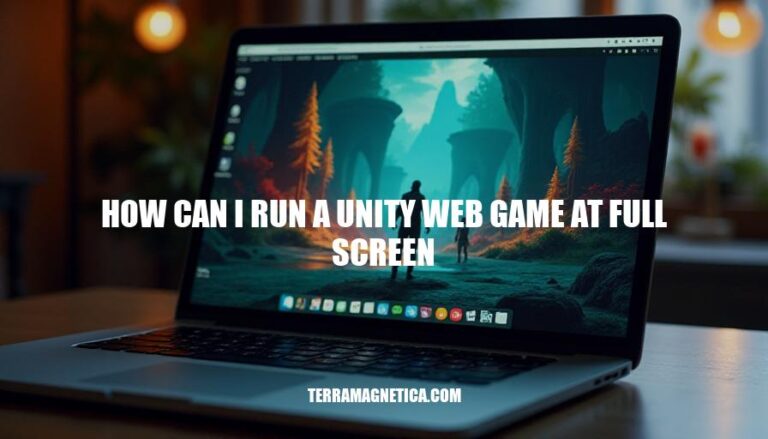


A Unity web game is an interactive application made with the Unity game engine, designed to be played directly in web browsers. Running it at full screen enhances player immersion, boosts visual clarity, and ensures the user interface elements are displayed as intended for a more seamless gaming experience.
Full screen mode in Unity web games takes your game window and expands it to fill your entire screen. This means no distractions from other windows or desktop icons, providing an immersive and uninterrupted gaming experience. You get the maximum screen real estate for graphics, allowing you to see more detail and feel more connected to the game world.
It’s like stepping into the game itself, away from the clutter of your digital workspace. Plus, full screen mode often improves performance by allowing the game to make better use of your computer’s resources, leading to smoother gameplay. Dive in, and let the game take over.
Open Unity Editor.
Go to File > Build Settings.
In the Player Settings tab, select Standalone.
Under Resolution and Presentation, set Fullscreen Mode to Exclusive Fullscreen.
Check Allow Fullscreen Switch and Resizable Window.
Click Switch to Fullscreen button.
<!DOCTYPE html>
<html lang="en">
<head>
<meta charset="UTF-8">
<meta name="viewport" content="width=device-width, initial-scale=1.0">
<title>Unity Web Game</title>
<style>
body {
margin: 0;
overflow: hidden;
}
#gameContainer {
width: 100vw;
height: 100vh;
}
</style>
</head>
<body>
<div id="gameContainer"></div>
<script src="Build/UnityLoader.js"></script>
<script>
var gameInstance = UnityLoader.instantiate("gameContainer", "Build/YourGame.json", {
onProgress: UnityProgress
});
window.onload = function() {
gameInstance.SetFullscreen(1);
};
</script>
</body>
</html>
document.addEventListener('keydown', function(event) {
if (event.key === 'f') {
if (!document.fullscreenElement) {
document.documentElement.requestFullscreen();
} else {
if (document.exitFullscreen) {
document.exitFullscreen();
}
}
}
});
This script listens for the ‘f’ key press to toggle full screen mode. Integrate it with your game logic.
Initial Check: Launch the application, and click the full-screen button or use the designated keyboard shortcut. Observe if the application enters full screen.
Screen Resolution: Adjust your screen resolution settings to various levels. Verify the application scales correctly in full screen across different resolutions.
Multiple Monitors: If using multiple monitors, test full-screen functionality on each screen.
Drag the application across monitors and enter full screen mode again.
Aspect Ratio: Check how the application handles different aspect ratios. Ensure that the content remains proportional and no elements are cut off or stretched.
Exit Full Screen: Test exiting full screen using both the escape key and any application-specific buttons. Ensure the application reverts to the previous window size.
Interactive Elements: While in full screen, interact with various elements like buttons, links, or videos to ensure they remain functional.
Performance: Monitor the application’s performance in full screen mode.
Check for any lags or crashes that may occur.
Browser-Specific Testing: If the application is web-based, test full screen functionality across different browsers to ensure consistency.
Hotkeys: Verify that all designated hotkeys for entering and exiting full screen work as expected.
Common Issues & Troubleshooting:
Application Won’t Enter Full Screen: Ensure that the full-screen button is properly coded and mapped to the correct function. Check for any conflicting software or settings.
Resolution Problems: Adjust the display settings in the application to support various resolutions. Ensure the application is responsive.
Stretched or Cut-Off Content: Implement proper aspect ratio handling in the application code.
Use CSS media queries for web applications.
Multi-Monitor Issues: Check the application’s settings for multi-monitor support. Test different configurations and update the software if necessary.
Hotkeys Not Working: Recheck the key mapping in the application. Ensure that no other software is overriding these key combinations.
Performance Issues: Optimize the application’s performance in full screen mode.
Consider reducing the application’s resource usage if necessary.
Is this hitting the mark?
Follow these steps:
In your HTML file, add a script that listens for the ‘f‘ key press to toggle full screen mode.
Integrate this script with your game logic.
Continuously test for optimal performance to ensure a seamless gaming experience.